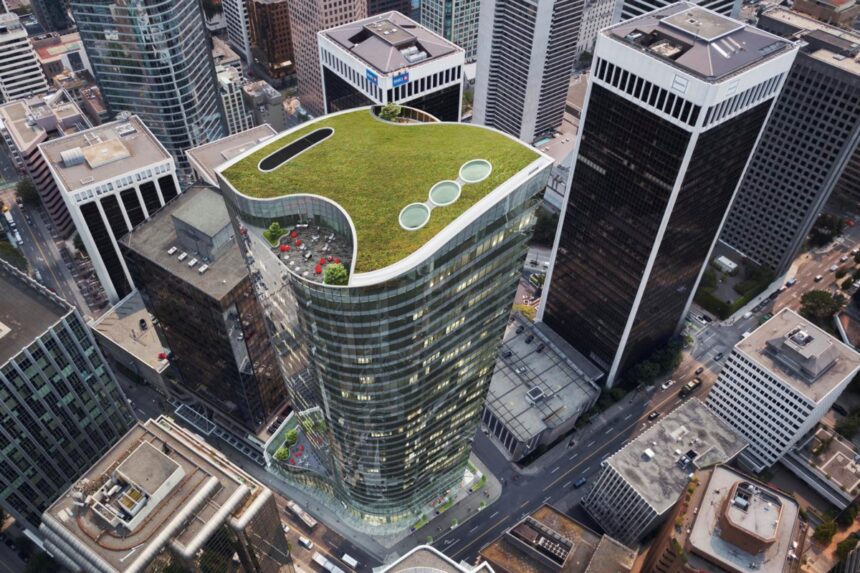As companies across Canada double down on return-to-office mandates, the commercial real estate landscape is experiencing an unexpected twist. What once looked like a death knell for downtown office towers during the pandemic has evolved into something far more nuanced – a flight to quality that’s reshaping our urban cores.
Walking through the financial district in Toronto last week, I couldn’t help but notice the contrast between buildings. Some older properties sit with vacancy signs while construction crews put finishing touches on gleaming new developments. This isn’t just anecdotal – it represents a fundamental shift in how businesses are approaching workspace in the post-pandemic era.
According to new data from Colliers Canada, premium office spaces are seeing substantially stronger demand than their mid-tier counterparts. National vacancy rates for Class A buildings have stabilized around 14.4%, while Class B properties continue struggling with vacancy rates exceeding 20% in most major markets.
“Companies are using their real estate footprint strategically now,” explains Ruth Fischer, Executive Managing Director at Colliers Canada. “If you’re going to mandate employees back to an office, that office better deliver something they can’t get at home.”
This competitive dynamic has created a two-tiered market. Top-tier buildings with amenities like advanced air filtration, collaborative spaces, and sustainability features are attracting tenants willing to pay premium rates, while dated properties face pressure to renovate or repurpose.
The numbers tell a compelling story. In Vancouver, Class A office space absorption turned positive in Q2 2023 for the first time since the pandemic began. Meanwhile, Toronto saw Class A vacancy rates decline by 0.7% last quarter while Class B vacancies continued climbing.
This trend runs counter to early pandemic predictions that office space would become largely obsolete. Instead, workplace strategists point to a more complex reality: physical offices remain valuable, but their purpose has fundamentally changed.
“The office isn’t dead – it’s just different now,” says Arlin Markowitz, Senior Vice President at CBRE. “It’s evolved from a place where people simply work to a destination that facilitates collaboration, learning, and culture-building.”
Data from Statistics Canada shows approximately 46% of Canadian businesses have implemented some form of return-to-office policy in 2023, up from 27% last year. Many companies now require 2-3 days of in-person attendance weekly.
This shift corresponds with rising tenant expectations. Pre-pandemic, reliable elevators and decent lobbies might have sufficed. Today’s tenants scrutinize air quality systems, flexible layout options, and amenities that might tempt employees back downtown.
Bay Street law firm Blake, Cassels & Graydon recently signed a 15-year lease for over 80,000 square feet in a new development, despite having two years remaining on their current lease. Managing partner Bryson Stokes told me their decision centered on employee experience: “We could have renewed at a lower rate, but our attorneys and staff deserve spaces designed for how we work today – hybrid, collaborative, and technology-enabled.”
These dynamics have developers rethinking future projects. CIBC Square in Toronto, which opened during the pandemic, boasts features specifically designed for hybrid work: advanced booking systems for desks, enhanced video conferencing facilities, and spaces that can transform from individual workstations to collaborative zones.
The emerging pattern has particular significance in Calgary, where downtown office vacancy hit nearly 30% during the energy sector downturn and pandemic. Yet Class A properties like Brookfield Place maintained occupancy above 85%, suggesting location alone isn’t determining demand – quality is the differentiator.
Meanwhile, older properties face existential questions. The Canada Mortgage and Housing Corporation estimates over 1.5 million square feet of office space in Montreal alone is being assessed for residential conversion. Toronto city council recently approved tax incentives to encourage similar adaptations.
For businesses navigating return-to-work strategies, the changing market creates both opportunities and challenges. Three-year lease terms, once rare, have become increasingly common as companies maintain flexibility while workplace needs evolve.
Commercial real estate analyst Jerome Chang notes an unexpected consequence: “The flight to quality has actually created negotiating leverage for tenants in the premium segment. Landlords are competing aggressively with concession packages, even while maintaining headline rates.”
Environmental considerations further complicate decisions. The Canada Green Building Council reports companies increasingly prioritize buildings with LEED certification or clear pathways to carbon neutrality, particularly as ESG commitments face greater scrutiny.
For employees themselves, these trends yield mixed results. While premium spaces offer enhanced experiences, longer commutes remain a significant concern. Recent Bank of Canada research indicated commuting costs represent the equivalent of a 20% salary reduction for many workers when factoring time and transportation expenses.
As I watch the continuous flow of office workers returning to downtown cores across the country, it’s clear we’ve entered a new phase in the workspace evolution. The pandemic didn’t kill the office – it transformed what we expect from it.
The buildings that thrive going forward won’t simply provide desks and conference rooms; they’ll create environments that justify the commute. And for properties that can’t adapt? The next chapter may involve a complete reimagining of their purpose in our urban landscape.






